Input Sources - Live Sound Engineering
Microphones:
Microphones are a type of transducer - a device that converts energy from one form to another.
Microphones convert acoustical energy (sound waves) into electrical energy (the audio signal).
Different types of microphones have different ways of converting energy but they all share one thing in common: The diaphragm.
This is a thin piece of material (such as paper, plastic or aluminum) that vibrates when it is struck by sound waves. In a typical hand-held mic like the one below, the diaphragm is located in the head of the microphone.
Location of Microphone Diaphragm
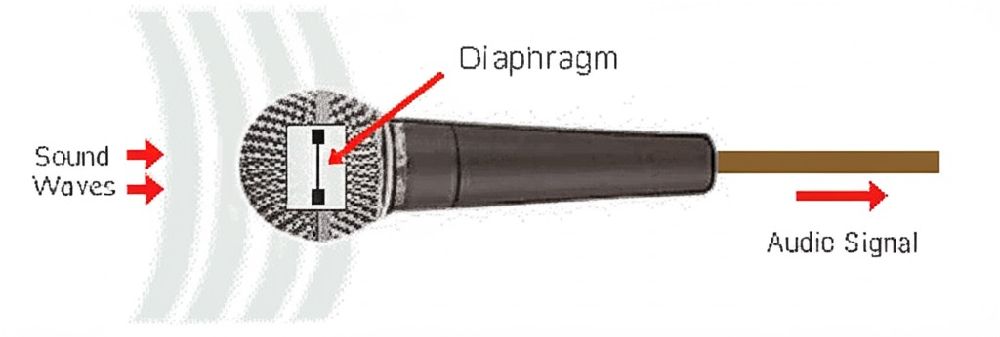
When the diaphragm vibrates, it causes other components in the microphone to vibrate. These vibrations are converted into an electrical current which becomes the audio signal.
Note: At the other end of the audio chain, the loudspeaker is also a transducer - it converts the electrical energy back into acoustical energy.
Types of Microphone's
There are a number of different types of microphones in common use. The differences can be divided into two areas:
(1) The type of conversion technology they use
This refers to the technical method the mic uses to convert sound into electricity. The most common technologies are dynamic, condenser, ribbon, and crystal. Each has advantages and disadvantages, and each is generally more suited to certain types of applications. The following pages will provide details.
(2) The type of application they are designed for
Some mics are designed for general use and can be used effectively in many different situations. Others are very specialized and are only really useful for their intended purpose. Characteristics to look for include directional properties, frequency response, and impedance (more on these later).
Mic Level & Line Level
The electrical current generated by a microphone is very small. Referred to as mic level, this signal is typically measured in millivolts. Before it can be used for anything serious the signal needs to be amplified, usually to line level (typically 0.5 -2V). Being a more robust signal, line level is the standard signal strength used by audio processing equipment and common domestic equipment such as CD players, tape machines, VCRs, etc.
This amplification is achieved in one or more of the following ways:
- Some microphones have tiny built-in amplifiers which boost the signal to a high mic level or line level.
- The mic can be fed through a small boosting amplifier, often called a line amp.
- Sound mixers have small amplifiers in each channel. Attenuators can accommodate mics of varying levels and adjust them all to an even line level.
- The audio signal is fed to powmicrophones that are used with PA systems. This section will describe microphones and how to choose the right type.
Microphone Types In Detail
It is often taught that "sound is vibrations in the air." We are able to enjoy music because we sense these vibrations in the air as sound.
Microphones convert these vibrations into electrical signals. Here are the two main types of microphcan
Dynamic microphones
Characteristics
- Construction is simple and comparatively sturdy.
- No power supply is required.
- Relatively inexpensive.
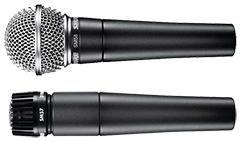
Condenser microphones
Characteristics
- Good sensitivity at all frequencies.
- Power is required - Phantom or battery power.
- Vulnerable to structural vibration and humidity.
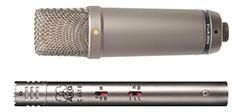
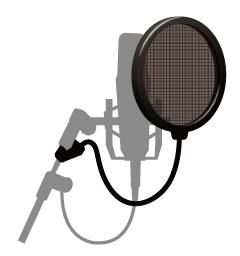
Reference: Which type of microphone should I choose?
Condenser microphones may have greater appeal because they have "good sensitivity at all frequencies". However, they are not always the most practical choice.
Often during recording, a "pop shield" filter is required to protect against noise caused by the vocalist's breath hitting the condenser microphone. This is because condensers are able to react to more subtle sounds. On the other hand, condenser microphones are not suited for high-volume recording, so dynamic microphones are mainly used in situations where loud audio is to be picked up.
Condenser microphones are used with PA systems in cases where a wide band of frequencies, ranging from low to high, is to be picked up for choir vocals, acoustic pianos, hi-hat cymbals (which are known for their sensitive and high frequency), or for use "overhead" to pick up sounds from eg: the entire drum set.
Microphone directionality
Microphones have directionality that indicates from which direction they best pick up sound. Microphones that do not have any specific directionality (called "omnidirectional" microphones) will pick up sounds from all directions, thus sounds other than those of the intended instruments will go into the microphone. Particularly with PA systems, many instruments will often be played together on a stage, so it is necessary to have a good understanding of directionality. Some microphones have switched how microphones select the preferred directional pattern.
(1) Unidirectional
This type of microphone features directionality to the front only and is also known as "cardioid" (because of its heart-shaped directional pattern). Cardioid mics are most often used with PA systems for vocals, instruments, etc. In the diagram, 0°indicates the front of the microphone.
(2) Bidirectional
This type of microphone features directionality to the front and rear. Because bidirectional microphones will also pick up audio to the rear, they are rarely used with PA systems. They are often used to record audio between two people who are face to face, such as during radio interviews.
(3) Omnidirectional
As mentioned above, this microphone type has no directionality. "Omni" mics are used to pick up all or wide range audio. For example, they are used for choirs, when many instruments are played at once, or to pick up all audio on the stage.
What directionality should I choose?
A unidirectional microphone is generally used when picking up vocal and instrument performances with a PA system. Only choose an omnidirectional microphone when picking up vocals or performances from many people, or all sounds from the stage. However, omnidirectional microphones have a wide directionality, so they will also pick up sounds from the main speakers and monitor speakers on the stage, and feedback can easily occur. Therefore, use caution with the placement and volume of these microphones.
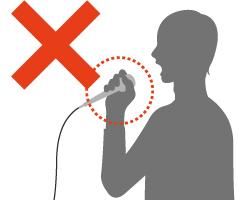
Tips: If the microphone is covered, feedback will occur more easily: don't cover the grille with your hand
When a squealing or howling kind of feedback occurs at karaoke or other amateur singing events, some people cover the microphone instinctively.
However, this has the opposite effect: If a microphone is covered, even a unidirectional microphone will behave like an omnidirectional microphone. It will pick up more sound from the speakers around it and cause more feedback. Some people hold the microphone at the tip, but be careful because this, too, will increase the risk of feedback.
Selecting a microphone
This section has explained that dynamic microphones are generally used with PA systems, and that unidirectional microphones are the most suitable in this case. It also explained that condenser microphones are used with hi-hat cymbals and as drum kit overheads. Now, let's consider the actual selection of microphones for PA systems, including the microphones discussed above.

Selecting a dynamic microphone: with or without a windshield?
Some dynamic microphones are equipped with windshields. One famous example is the SHURE SM58.
One benefit of using a microphone with a windshield is that they protect against rapid air flow, such as bairflow wind. Any vocals or instruments which generates wind noise, such as a kick drum, floor toms, and bass amplifiers (which have a characteristically low frequency) are best used with a windshield to pick up audio.

Dynamic microphones without an attached windshield, such as the SHURE SM57, can have a natural and pure sound. Therefore, they should be used with such devices as electric guitar amplifiers and acoustic guitars, as well as snare drums and rack toms.
Other microphones
Here are two other types of microphones designed for specific uses.
(1) Wireless microphones
Wireless microphones can be moved around freely, without the cables getting in the way. These microphones require a transmitter and a receiver to the transmitter, whereas headset and clip-on microphones include a cable that attaches to the belt-pack transmitter.
The transmitters for both types are powered by batteries (either dry-cell or rechargeable), so always make sure that ample battery power is available.
It's also necessary to set the transmitter of the broadcasting microphone and the receiver to the same channel. Make sure that when you are using more than one wireless microphone, the transmitting and receiving channels are set differently for each microphone.
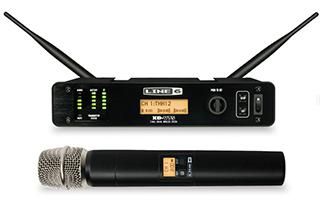
(2) Headsets and lapel microphones
Microphones worn on one's head are called headsets, while microphones worn on clothing not far from one's mouth are called lapel (or lavalier) microphones. Either can be used so that both hands are free. Headsets are often used while singing or dancing, while lapel microphones are often used by presenters on television. These headsets and lapel microphones are often used wirelessly.
Note: Many headset and lapel microphones are omnidirectional, so extreme caution should be applied when using them with PA systems. Try using a unidirectional headset microphone to reduce the risk of feedback.
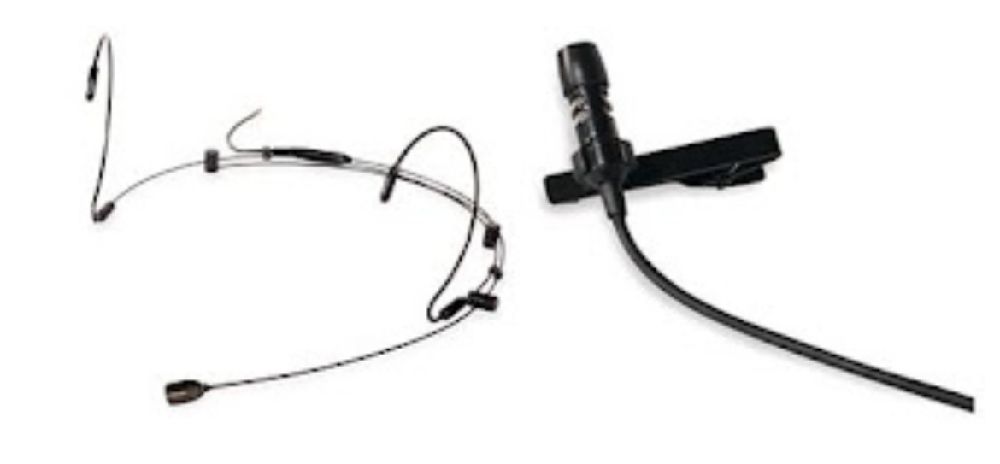
D.I. Boxes
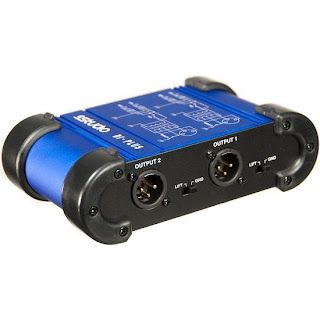
Types of DI Box
The simplest and most common type of DI Box is the passive DI. This is generally used to match line levels or instrument levels sources such as guitars and keyboards, d matches them to the mic inputs.
Often, these also have a ground lift switch (this can sometimes reduce unwanted hums and noise).
The drawback of passive DI Boxes is that they reduce the signal level a little (typically from 3-6dB), and can lose a little tone with low-level signals, and sound thin and distorted when overloaded.
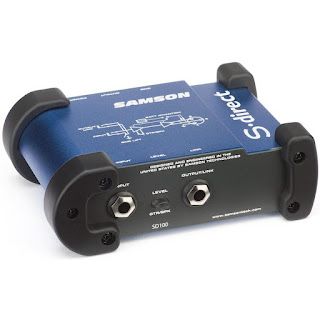
Active DI Boxes have active circuitry, which means that they require power. This is usually supplied via phantom power or an internal battery.
Whereas passive DIs use transformers to change signal impedance, the active DI uses powered amps.
This negates the problems that occur with passive DIs at the limits of their dynamic range. However, when the signal is too hot, active DI boxes can distort unpleasantly. They don’t have the problem of disappearing low-end like passives do, though.
This is all dependent on power levels- as a battery drains, performance will get worse. Plus, phantom power is not always 48V, which again can cause problems with performance.
When would I use a DI Box?
Here are some common uses…
With PA gear
Though many pro-stage pianos feature balanced outputs, many don’t, and neither do synths and keyboards typically. DI boxes will ensure a noise-free connection to the PA.
You may also be connecting an acoustic guitar to a PA- A DI Box is perfect for this. If an amp fails at a gig, this can also be a quick (though not ideal) fix.
Plus, many stage boxes only feature balanced XLR connections. DIs will enable you to easily connect your gear with the highest quality.
Matching impedance
Many passive DI box models can also be used to re-amp signals. This means that they can work in reverse, taking a line-level signal and converting it to an instrument-level connector.

